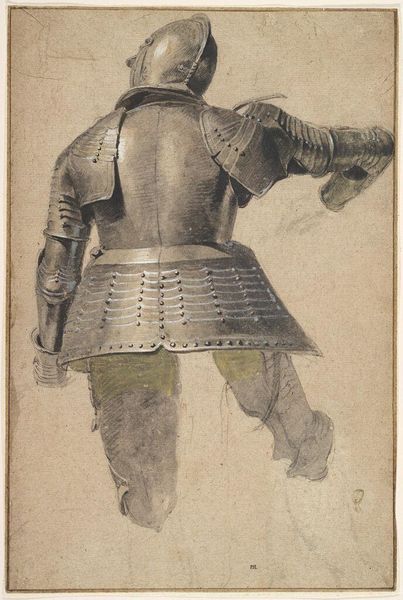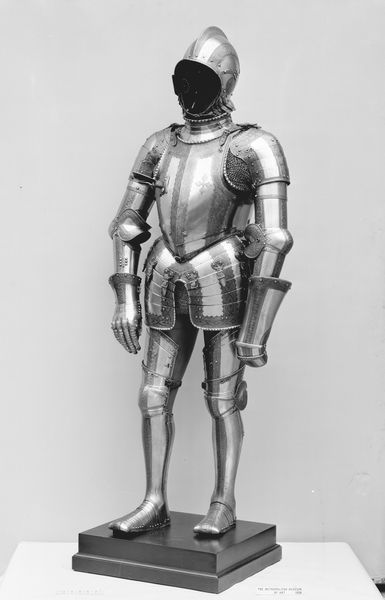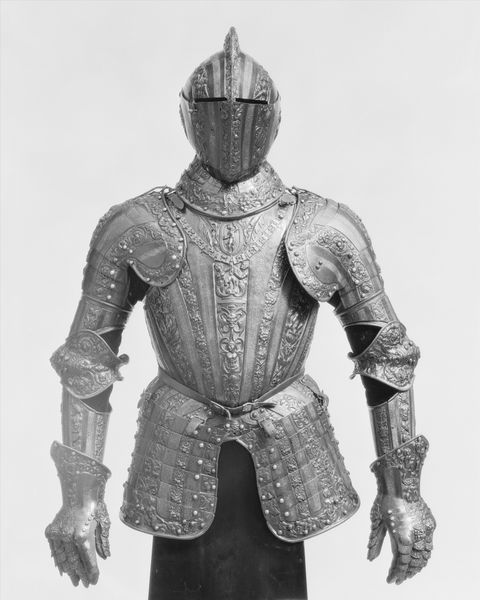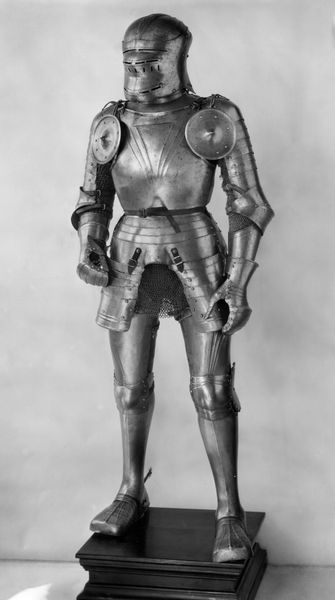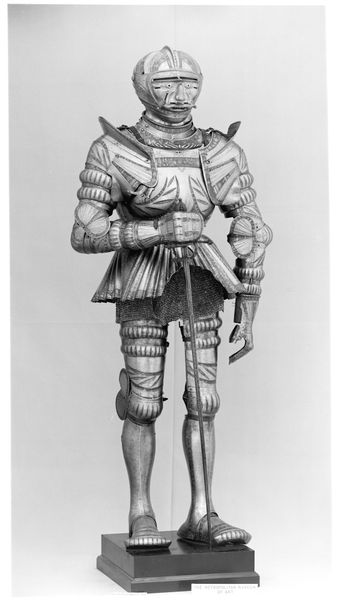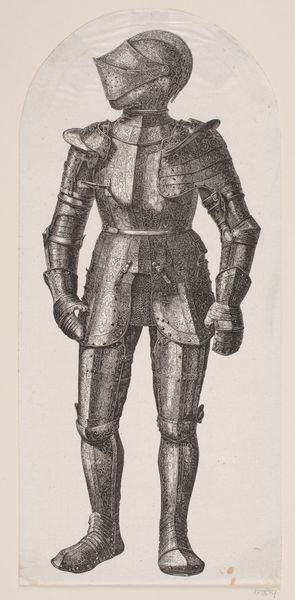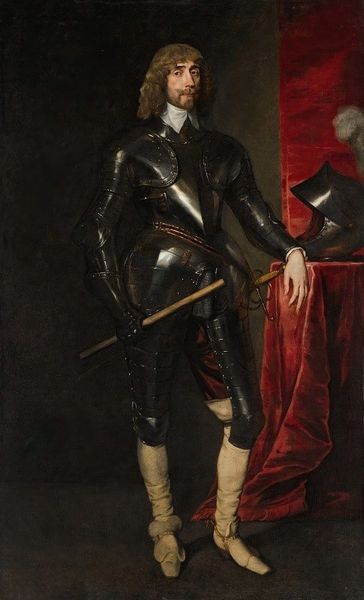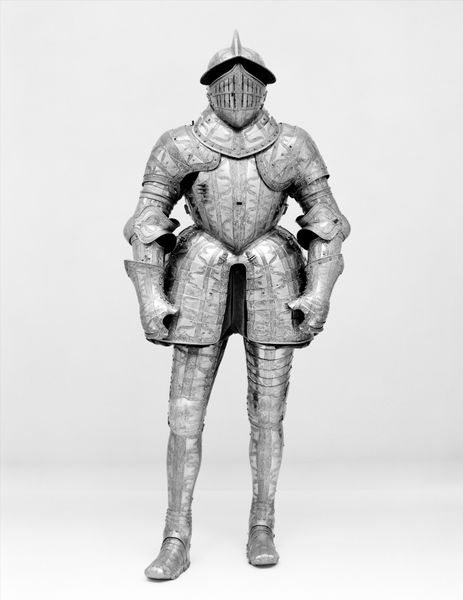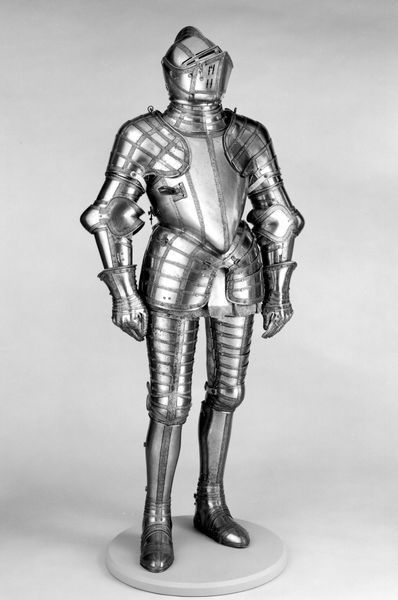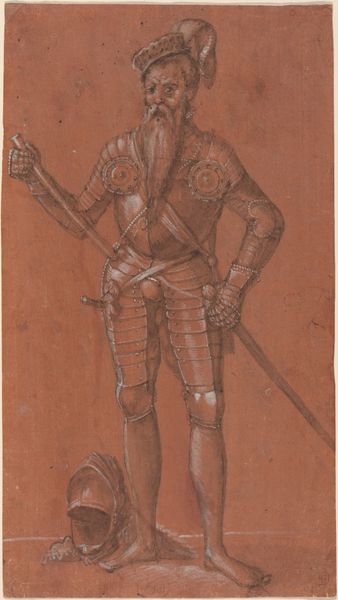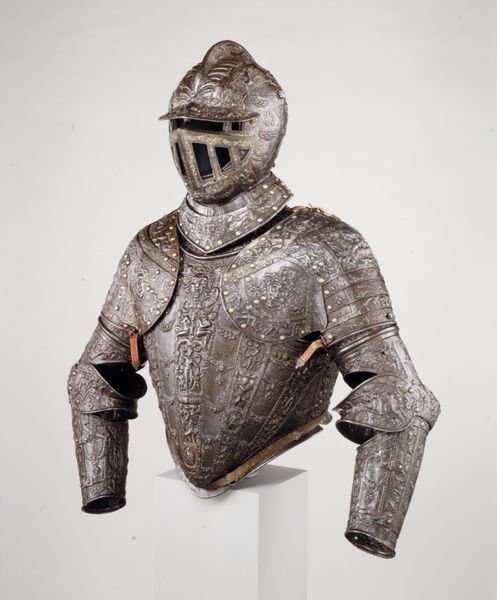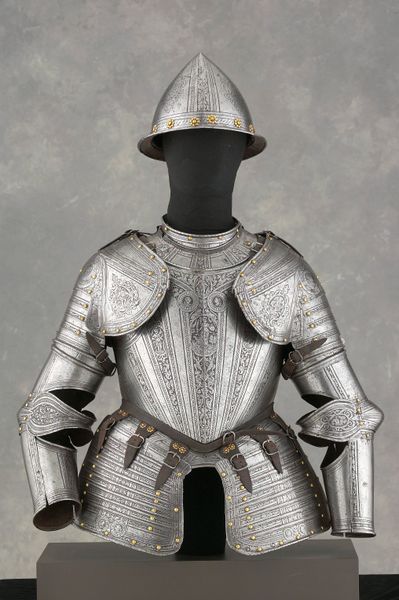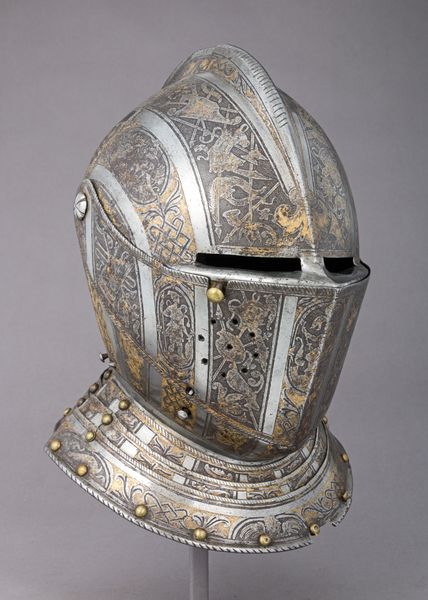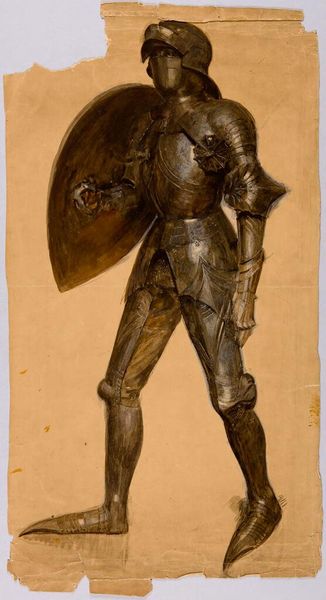
oil-paint
#
portrait
#
oil-paint
#
oil painting
#
portrait head and shoulder
#
romanticism
#
history-painting
#
academic-art
#
portrait art
#
fine art portrait
Copyright: Public Domain: Artvee
Curator: Looking at "Dreiviertelharnisch" by Johann Peter Krafft from 1839, I feel like I'm gazing into a reflection in polished steel. What strikes you? Editor: I am immediately struck by its almost paradoxical nature—this fragment of a body, armored and imposing, also feels incredibly vulnerable. It's a powerful statement on the militarization of identity. Curator: Vulnerable, yes, it's so interesting you say that. It almost feels unfinished, you know? Like he’s painting a ghost of protection rather than the full story. He paints using oils. Editor: The choice to use oil on canvas contributes to this nuanced tension. Oil, typically a medium associated with portraiture and capturing human likeness, is here used to depict an object intended to negate humanity—armor. It invites questions about power structures and representation. Who benefits from romanticizing this image of warfare? Curator: Right! Because armor, like… especially at this scale, it restricts and constrains. And you see these romantic paintings, these heroic portrayals of men encased in metal… I wonder how the artist grapples with that dissonance, painting within this historical painting style. Editor: And it’s worth considering who typically had the privilege to wear such armor. What class, what race, what gender? What narratives are centered, and which are obscured when we view history through this lens? Curator: Exactly. It becomes a symbol less of bravery and more of access. Look how the light plays on the different facets—it gives it this unreal glow. It's undeniably beautiful even as we dissect its problematic implications. Editor: Beautiful, yes, but also intimidating. It's a chilling reminder that even objects can embody historical trauma and persistent inequalities. What is protection to some is a form of subjugation and violence toward others. Curator: It's definitely not just decoration. To me, it’s a kind of shield... a very literal one in this case... and armor doesn’t just mean safety. Editor: Exactly! It demands we look critically at the narratives being constructed and circulated about power, identity, and the ever-present echoes of history in our contemporary moment. Curator: Absolutely. And maybe, just maybe, question the shining armor a little more closely next time. Editor: Yes, perhaps interrogate what and who is hidden within it.
Comments
No comments
Be the first to comment and join the conversation on the ultimate creative platform.
